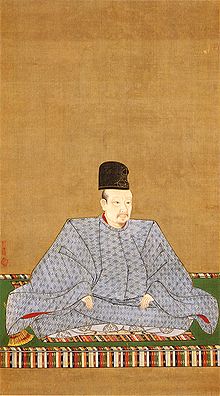Emperor Go-Yōzei
| Go-Yōzei | |
|---|---|
| Emperor of Japan | |

Go-Yōzei
|
|
| Reign | December 17, 1586 – May 9, 1611 |
| Coronation | December 15, 1586 |
| Predecessor | Ōgimachi |
| Successor | Go-Mizunoo |
| Born | December 31, 1571 |
| Died | September 25, 1617 (aged 45) |
| Burial | Fukakusa no kita no misasagi (Kyoto) |
| Spouse |
(Chūwa-mon in) |
| Issue |
|
| House |
Imperial House of Japan (Yamato Dynasty) |
| Father |
Prince Masahito (Yōkō in) |
| Mother |
(Shin-Jōtō-mon in) |
Emperor Go-Yōzei (後陽成天皇 Go-Yōzei-tennō?, December 31, 1571 – September 25, 1617) was the 107th Emperor of Japan, according to the traditional order of succession.
Go-Yōzei's reign spanned the years from 1586 through 1611, corresponding to the transition between the Azuchi–Momoyama period and the Edo period.
This 16th-century sovereign was named after the 9th-century Emperor Yōzei, and go- (後?), translates as later, and thus, he could be called the "Later Emperor Yōzei". The Japanese word go has also been translated to mean the second one, and in some older sources, this emperor may be identified as "Yōzei, the second", or as "Yōzei II".
Before Go-Yōzei's ascension to the Chrysanthemum Throne, his personal name (imina) was Katahito (周仁?).
He was the eldest son of Prince Masahito ( Masahito-shinnō?, 1552–1586), also known as Prince Sanehito and posthumously named Yōkwōin daijō-tennō, who was the eldest son of Emperor Ōgimachi. His mother was a lady-in-waiting.
...
Wikipedia
